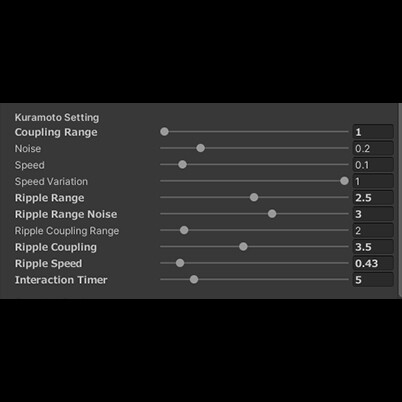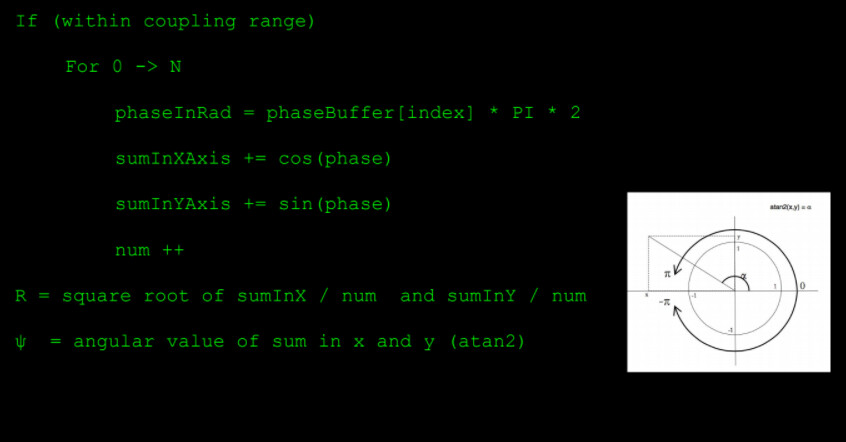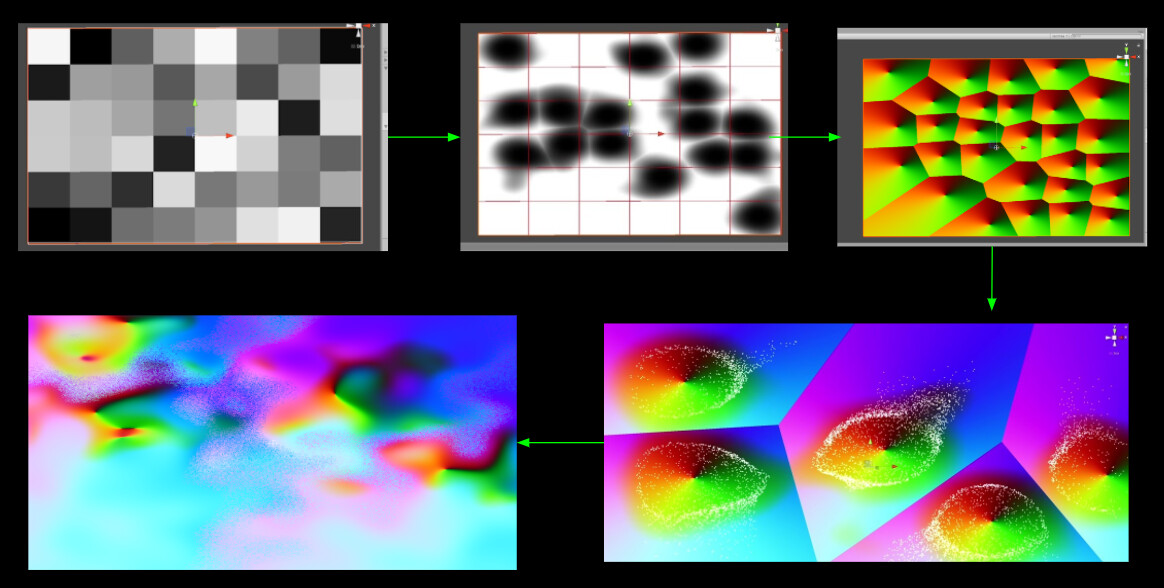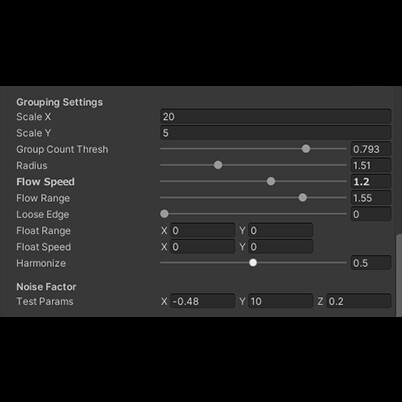Autonomous Abstraction
Visual + Programming: Eyez
This is a fireflies inspired GPU particle synchronization system for Teamlab worldwide exhibitions which can also be adapted to simulate other grouping behaviors.
https://www.teamlab.art/w/autonomous_abstraction/
I adapted synchronization math and coupling behavior into a GPU based pipeline ensuring millions of real-time fireflies interact with: each other, sound and human motion. It was experienced by hundreds of thousands of people in gigantic interactive installations across the globe including SF, Tokyo and Shangha, and Beijing https://www.teamlab.art/ew/autonomous_abstraction_beijing/masslessbeijing/i.
System written in C#, compute shader, HLSL in Unity.
Features:
1. Synchronization patterns: creates desired syncing modes by simple parameters adjustment.
2. Grouping map: A mini system through shader to control grouping behaviors of particles.
3. Secondary sync map control: An interactive layer on top of synchronization system to control sync range and spreading speed.
FIrefly Engine showing in Beijing Massless Permanent Exhibition
Basic Color Mode
GPU particle synchronization onsite integration
(drastic full-range coupling)
(fruit flies coupling)
(far range natural coupling)
(fast spiral coupling)
(noise tornado coupling)
Kuramoto Synchronization close-up
2. Grouping map: A mini system through shader to control grouping behaviors of particles.
A: Interactive coupling map
B: Base Kuramoto synchronization layer
A+B: Coupling map controlled sychronization
Resources:
https://en.wikipedia.org/wiki/Kuramoto_model
http://go.owu.edu/~physics/StudentResearch/2005/BryanDaniels/intro.html
https://www.nationalgeographic.com/animals/article/watch-how-mexican-fireflies-s





